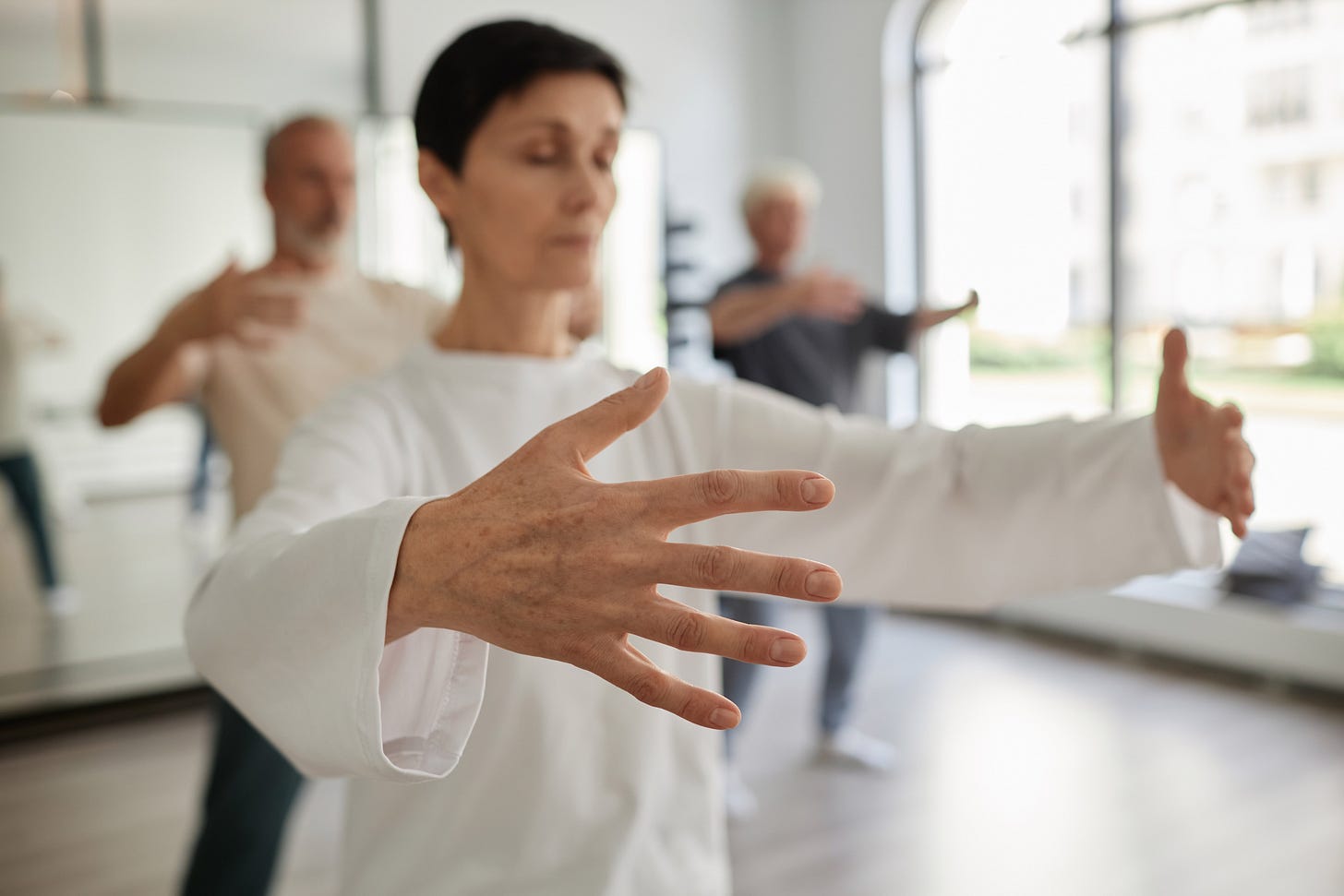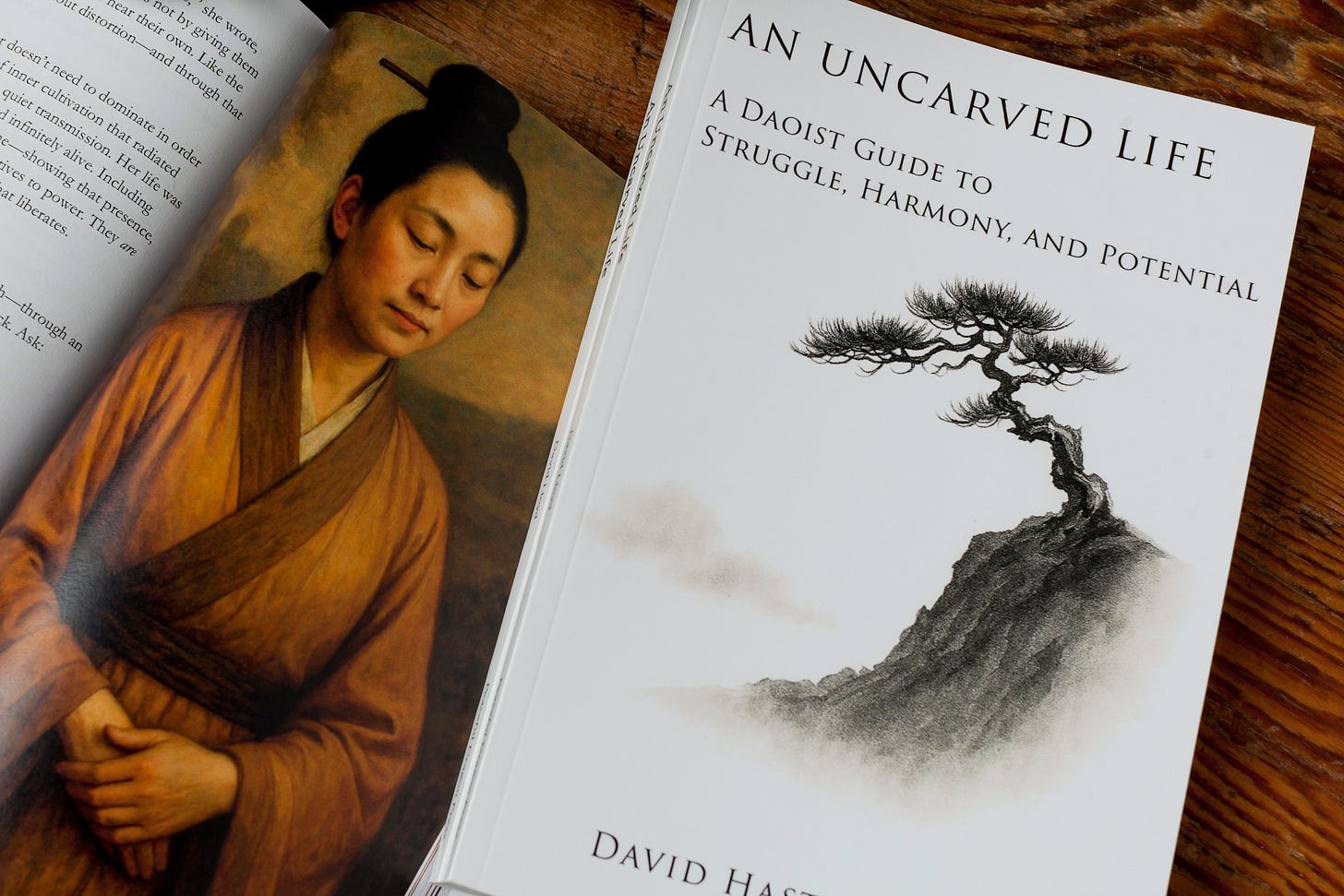Peer-Reviewed Research: Tai Chi and Qigong for Chronic Heart Failure
A Pathway to Healing Through Movement
Imagine being told that simple, graceful movements—performed slowly, in harmony with your breath—could help strengthen your heart, improve your endurance, and lift your mood. For people living with chronic heart failure, this is not just poetic imagery; it’s increasingly supported by scientific evidence.
A 2020 meta-analysis led by Xiankun Chen and colleagues at the Karolinska Institute and Guangdong Provincial Hospital of Chinese Medicine set out to answer an important question: Can Tai Chi and Qigong truly support heart health in patients with chronic heart failure (CHF)? Their study reviewed 33 randomized controlled trials (RCTs) involving 2,465 participants, making it one of the most comprehensive evaluations of these traditional Chinese mind–body practices in cardiac rehabilitation to date.
The Global Challenge of Heart Failure
Heart failure affects over 26 million people worldwide. It’s a condition where the heart’s ability to pump blood is weakened, leading to fatigue, shortness of breath, and reduced exercise tolerance. While medications remain essential, lifestyle interventions—especially exercise—play a key role in improving outcomes. However, many patients are unable or unwilling to join traditional cardiac rehabilitation programs, often due to cost, mobility issues, or limited access to specialized facilities.
This is where Tai Chi and Qigong (TQPs) may fill the gap. They require no equipment, can be done at home, and emphasize gentle movements coordinated with breathing and mindfulness—making them suitable for elderly or frail patients.
The Study at a Glance
Chen and colleagues reviewed both English and Chinese studies published up to October 2019. Their inclusion criteria were strict: only randomized controlled trials comparing Tai Chi or Qigong (either alone or added to standard medical care) were accepted. The team looked at key measures of cardiovascular health:
Peak oxygen consumption (VO₂peak): an indicator of how efficiently the body uses oxygen during exercise.
Six-minute walking distance (6MWD): a simple test of endurance.
Minnesota Living with Heart Failure Questionnaire (MLHFQ): a widely used tool for assessing quality of life.
They also examined heart function (via left ventricular ejection fraction, or LVEF), and biochemical markers such as B-type natriuretic peptide (BNP), which reflects heart strain.
What They Found
The results were compelling.
When Tai Chi and Qigong were added to routine medical treatment, patients showed statistically significant improvements across multiple areas:
VO₂peak increased by 1.24 mL/kg/min, meaning patients could use oxygen more efficiently.
Walking endurance improved by nearly 60 meters on average in the six-minute walk test—a meaningful increase in daily mobility.
Quality of life scores improved by 8.6 points, indicating better overall well-being.
These gains were not minor. For people living with chronic heart failure—where fatigue and breathlessness can define everyday life—such improvements can mean regaining the ability to walk around the block, climb stairs, or enjoy simple activities again.
When Tai Chi and Qigong were compared to general exercise programs such as walking or cycling, the results were more nuanced. While both forms of movement improved physical capacity, Tai Chi and Qigong produced greater enhancements in quality of life, suggesting that their meditative and emotional dimensions may contribute unique benefits beyond physical conditioning alone.
The Science Behind the Movements
Why might these gentle practices make such a difference?
Tai Chi and Qigong blend movement, breathing, and mindfulness—a trio known to influence multiple physiological systems. Their slow, flowing motions improve muscle tone and balance without overloading the cardiovascular system. Deep, rhythmic breathing increases oxygen exchange and helps regulate the autonomic nervous system, balancing the “fight-or-flight” and “rest-and-digest” responses. The meditative focus can also reduce anxiety and improve adherence, since the exercises are often enjoyable and stress-relieving.
On a biochemical level, previous studies have linked these practices to enhanced endothelial function (improving blood vessel dilation), lower inflammatory markers, and reduced sympathetic overactivity, all of which are key factors in heart failure progression.
Adherence and Safety: Gentle Yet Powerful
A major challenge in cardiac rehabilitation is keeping patients engaged over the long term. Here, Tai Chi and Qigong shine. Across the included trials, adherence rates were high—between 75% and 100%, with no serious adverse events reported. Most dropouts were unrelated to the practices themselves, such as hospitalization for other reasons.
The simplicity and accessibility of these exercises—requiring no gym, no special equipment, and minimal supervision—make them ideal for home-based rehabilitation. Patients can start with short, guided sessions and build consistency at their own pace.
Quality of Evidence and Limitations
While the findings are encouraging, Chen and colleagues also acknowledged the limitations of existing research. Most of the included trials were conducted in China, with relatively small sample sizes. Blinding participants to the intervention—a standard in drug trials—is impossible in exercise studies, which may introduce bias. Furthermore, variations in program style, frequency, and duration made it difficult to establish a single “dose” of Tai Chi or Qigong that works best.
Despite these caveats, the evidence was rated as moderate in quality for key outcomes like exercise capacity and quality of life—strong enough to recommend further integration of these practices into cardiac rehabilitation programs worldwide.
Real-World Implications
This study adds to a growing body of evidence suggesting that movement can be medicine—especially when infused with mindfulness. For clinicians, Tai Chi and Qigong offer an effective, low-cost complement to standard therapies. For patients, they provide a way to take an active role in recovery, regain confidence in movement, and experience a sense of calm and vitality that pharmacology alone cannot offer.
From a public health perspective, such interventions could also reduce healthcare costs by improving self-care, lowering hospital readmission rates, and empowering communities with tools for preventive wellness.
A Bridge Between Ancient Wisdom and Modern Science
Perhaps the most inspiring aspect of this research is its fusion of traditional and modern paradigms. Qigong’s ancient philosophy speaks of cultivating qi, the vital energy that harmonizes body and mind. Modern physiology, meanwhile, measures oxygen uptake, heart efficiency, and nervous system balance. Yet both are describing the same reality from different perspectives: the body as an interconnected system capable of healing through awareness and movement.
Tai Chi and Qigong remind us that rehabilitation is not just about restoring function—it’s about restoring connection: to breath, to body, and to life itself.
Final Thoughts
For those living with chronic heart failure, daily movement can feel daunting. But studies like this show that gentle, mindful practices are not only possible—they can be profoundly therapeutic. Whether practiced in a hospital rehabilitation program or at home in a quiet living room, the simple act of moving with intention has the power to strengthen both the heart and the spirit.
Reference
Chen, X., Savarese, G., Cai, Y., Ma, L., Lundborg, C. S., Jiang, W., Wen, Z., Lu, W., & Marrone, G. (2020). Tai Chi and Qigong Practices for Chronic Heart Failure: A Systematic Review and Meta‐Analysis of Randomized Controlled Trials.Evidence-Based Complementary and Alternative Medicine, 2020, Article ID 2034625.
Like what you read? Keep exploring…
If this post resonated with you, you’ll love my book:
An Uncarved Life: A Daoist Guide to Struggle, Harmony, and Potential
This book blends timeless Daoist wisdom with real-world insight into how we can navigate struggle, cultivate inner peace, and live in alignment with our deeper potential. Drawing from classical texts like the Dao De Jing and integrating modern psychology and neuroscience, An Uncarved Life offers a grounded, poetic, and deeply personal guide to living well in a chaotic world.
Whether you’re seeking clarity, calm, or a more meaningful path forward, this book is a companion for anyone who wants to walk the Way with sincerity and strength.
Available now in print, Kindle, and audiobook formats.
Click here to get your copy on Amazon



